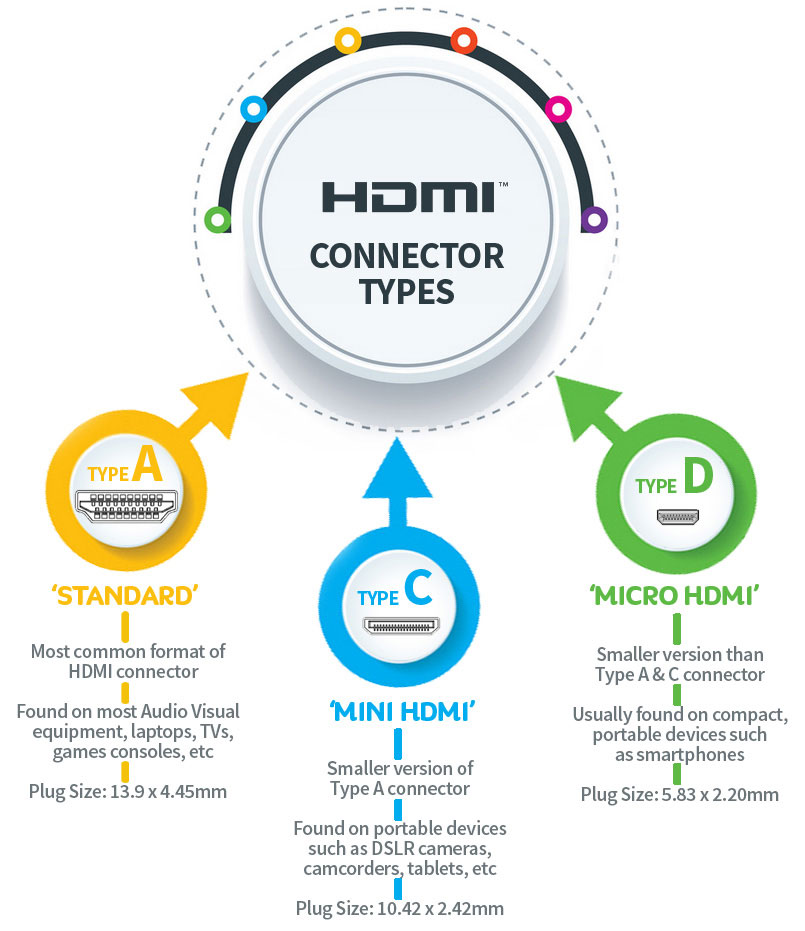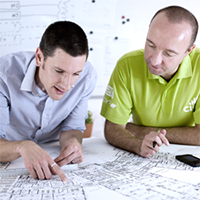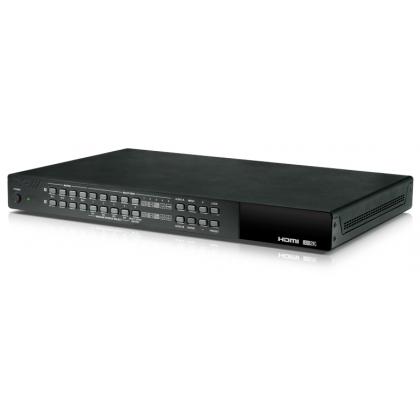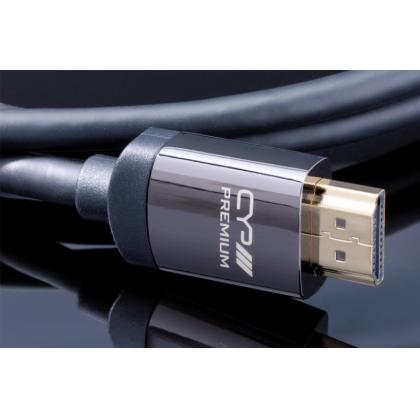What is HDMI?
Explaining what High Definition Multimedia Interface is and how to increase the distance of your signal.
HDMI explained
 HDMI stands for High Definition Multimedia Interface and is the most frequently used HD signal for transferring both high definition audio and video over a single cable.
HDMI stands for High Definition Multimedia Interface and is the most frequently used HD signal for transferring both high definition audio and video over a single cable.
It is used both in the commercial AV sector and is the most used cable in homes connecting devices such as digital TV, DVD player, BluRay player, Xbox, Playstation and AppleTV with the television.
More and more home AV devices are being connected using this simple, effective cable, but now HDMI is also featuring on laptops and PCs and therefore becoming the standard for the corporate and commercial markets – for education, presentation, digital signage and retail display to transmit high quality audio video siganls from device to device.
Fitting a HDMI cable into the AV system
HDMI is a digital interface, single cable solution for combined HD video and audio, replacing analogue solutions which require separate audio/video cables (such as VGA and audio jack).
Use a HDMI lead to connect the output from your HD source (the Blu-ray player or the Skybox, for example) to the input of our HD displays – whether that be your TV, commercial screen or projector, all the way up to a multi-screen video wall! HDMI cables will also be used in an AV / home entertainment system if the system includes additional control or signal distriobution devices such as a signal splitter, HDMI switcher or AV matrix.
What are the differences between HDMI cables and connectors?

The Standard 14mm version of HDMI connector is known as 'Type A’ and is available as either a ‘plug’ or ‘male’ connector on the cable. A normal HDMI cable will usually feature a plug at both ends, with HDMI Type A Sockets featuring on the AV devices (the Source, Display, Screen, TVG, etc).
The HDMI Type A connector is the most common version and can be found on the majority of audio visual equipment and devices, from your TV, Blu-Ray and XBox to professional distribution equipment such as HDMI distribution amplifiers, matrix devices and siganl switchers.
But there are also HDMI Mini (Type C) and HDMI Micro (Type D) HDMI connector versions available, as smaller and smaller devices, such as our smart phones and tablets increasingly become our personal HD AV sources.
However, there are limitations to the distance HDMI transmissions can travel. At CIE we recommend when using Category 1 'standard' HDMI cable that the lengths are limited to probably no more than 10 meters.
There is high grade Category 2 cable available, using which we can successfully achieve cable lengths of up to 15 metres.
There are a number of options to increase the distance of your HDMI signal:
- Using HDMI switchers and repeaters; which will effectively 'amplify' or recalculate your HDMI signal, allowing the transmission to be improved and extended.
- Using the latest HDMI-over-Ethernet cable or HDBaseT technology;
- Using HDBaseT technology you can extend your signal to up to an incredible 100 metres over standard cat 5e, 6 or 7 ethernet cable.
These systems require specific transmitter/receiver devices, all of which we look into in great detail in other videos on the HowToAV video channel.
 Want help with your HDMI / AV System design?
Want help with your HDMI / AV System design?
CIE is one of the UK's leading and most innovative professional AV distributors and is a leading provider of HDMI and HDBaseT professional systems and devices.
With over 50 years experience in supply and system design for many of the UK's largest, high profile audio projects, our AV experts provide a unique level of technical support and customer service.
Call the CIE AV experts now on T. 0115 9770075 or email us at [email protected]
Find out more about HDMI
CIE's HowToAV.tv has a whole host of videos and blogs on HDMI, which format to choose, how to get the most out of your signal and more. Click on the links below to find out more.
We take a look at the distance limitations siganl transmission over standard Category 1 and Category 2 HDMI cable.
There are a whole host of reasons why a seemingly good HDMI signal can drop out without warning. We take a look at a number of reasons for signal drop-out and provide a checklist for fault-finding on your system.
The latest cable certification for High Speed HDMI cables have been designed for ultra-reliable performance for 4K/UltraHD including advanced features such as 4K60, HDR, expanded colour spaces, meeting the demands of 18Gbps bandwidth signals. We find out if Premiuim HDMI leads really make a difference...
With more and more sources being connected to your TV or screen, chances are you're limited to just 2 or 3 HDMI inputs? So how can you add more inputs without having to invest in a new TV? HowToAV explains how Switchers and Matrix devices provide the solution.
With recommended transmission distances of just 5 to 10 metres (20 metres at very best) over standard HDMI cable, getting your HDMI Source signal to the Screen can often seem a challenge. But their are a number of devices and technologies out there - from simple equalisers and repeaters, to the latest in HDMI over Ethernet or Fiber - that can increase your signal transmission distances to hundreds of metres!
Good question! ..and one that seemingly everyone has a very strong opinion about - and that they want to share!
So we talk to cable expert James Chen of Kordz to get his industry opinion on choosing the right HDMI lead for the job.
Though HDMI carries both video and audio signals simultaneously of course, there are certain (commercial) applications where you might need to embed an alternative audio signal (think sports bars showing sports TV channel but playing music from a different source, for example).
We look at how HDMI audio embedders offer a simple solution.
Whether it's for commercial or residential systems, the number of AV Source and Display devices we own continues to increase. And, therefore, many integrated system require the ability to switch and change between which Source is transmitting to which Display or TV.
HDMI Switchers, Matrix devices and the latest software solutions provide management, control and distribution of the growing multi-device AV system.
HDCP - or High-definition Digital content Protection - is encrypted within the HDMI signal as a 'digital handshake' between devices to help protect content from being copied. However, it can cause huge headaches between devices, with the much maligned 'HDCP error' message appearing on screen!
 Got a question for the HowToAV team?..
Got a question for the HowToAV team?..
CIE's HowToAV.tv provides a whole host of tips, tricks and technology know-how for the professional and residential AV sectors.
Subscribe to our YouTube channel now at howtoav.tv for all the latest video casts or send us your questions to [email protected]











